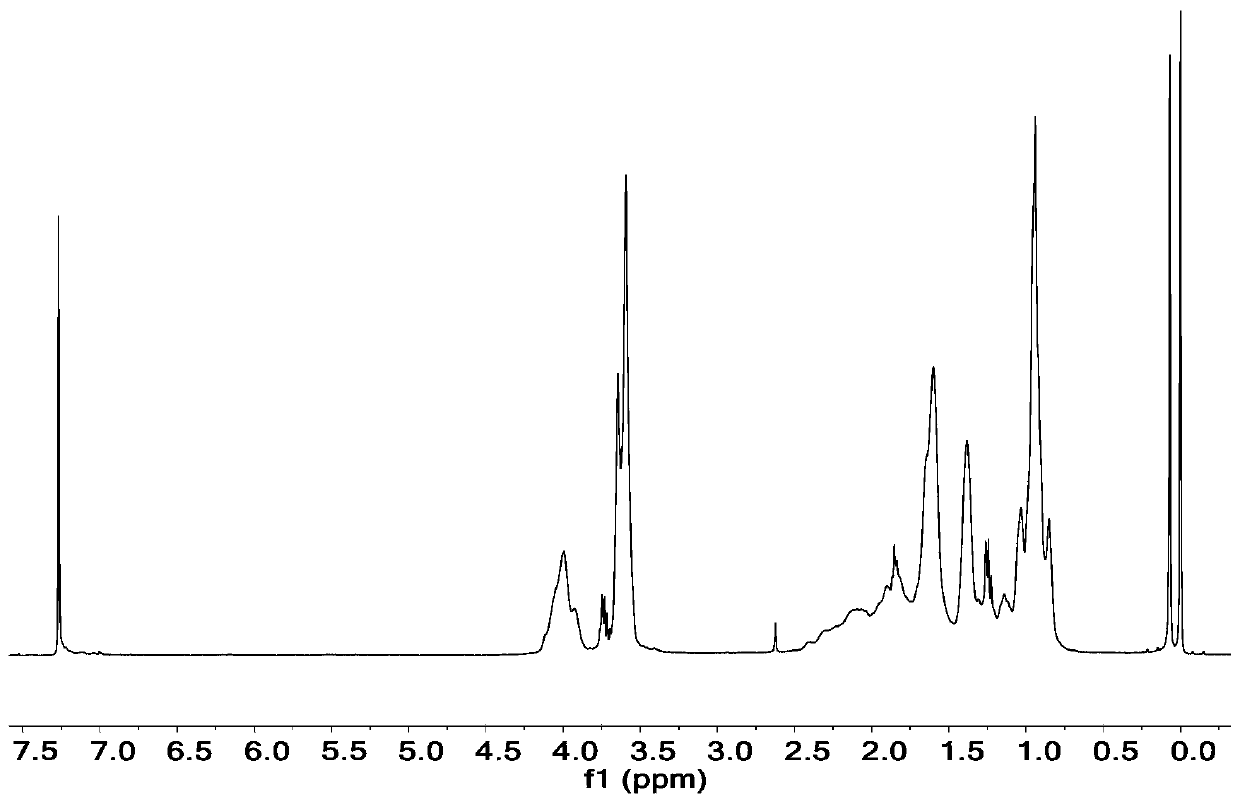Lock type self-repairing polymer, preparation method and application thereof
A self-healing, polymer technology, which is applied in the field of lock-type self-healing polymers and its preparation, can solve the problems of cumbersome synthesis methods, and achieve the effects of simple repair methods, increased polymerization flexibility, and high repair efficiency
- Summary
- Abstract
- Description
- Claims
- Application Information
AI Technical Summary
Problems solved by technology
Method used
Image
Examples
Embodiment 1
[0038] A lock-type self-healing polymer obtained by polymerization of methyl methacrylate (PMMA) and butyl acrylate (BA). The name of the polymer is PMMA-co-PBA.
[0039] The preparation method of PMMA-co-PBA comprises the following steps:
[0040] Dissolve 5.05g MMA, 4.30g BA (molar mass ratio is 6:4) and 0.0936g BPO in 5mL toluene and react in an oil bath at 120°C for 12h. After the reaction is completed, add a certain amount of 5mL toluene, and then add a large amount of The product was precipitated by isopropanol, then filtered with suction, washed with isopropanol, and dried in an oven at 60°C to obtain PMMA-co-PBA.
Embodiment 2
[0042] A lock-type self-healing polymer obtained by polymerization of methyl methacrylate (PMMA) and butyl acrylate (BA). The name of the polymer is PMMA-co-PBA.
[0043] The preparation method of PMMA-co-PBA comprises the following steps:
[0044] Dissolve 5.05g MMA, 4.30g BA (molar mass ratio is 6:4) and 0.0936g BPO in 5mL toluene and react in an oil bath at 100°C for 12h. After the reaction is completed, add a certain amount of 5mL toluene, and then add a large amount of The product was precipitated by isopropanol, then filtered with suction, washed with isopropanol, and dried in an oven at 60°C to obtain PMMA-co-PBA.
Embodiment 3
[0046] A lock-type self-healing polymer obtained by polymerization of methyl methacrylate (PMMA) and butyl acrylate (BA). The name of the polymer is PMMA-co-PBA.
[0047] The preparation method of PMMA-co-PBA comprises the following steps:
[0048] Dissolve 5.05g MMA, 4.30g BA (molar mass ratio is 6:4) and 0.0936g BPO in 5mL toluene and react in an oil bath at 120°C for 8h. After the reaction is completed, add a certain amount of 5mL toluene, and then add a large amount of The product was precipitated by isopropanol, then filtered with suction, washed with isopropanol, and dried in an oven at 60°C to obtain PMMA-co-PBA.
PUM
| Property | Measurement | Unit |
|---|---|---|
| tensile strength | aaaaa | aaaaa |
Abstract
Description
Claims
Application Information
 Login to View More
Login to View More - R&D
- Intellectual Property
- Life Sciences
- Materials
- Tech Scout
- Unparalleled Data Quality
- Higher Quality Content
- 60% Fewer Hallucinations
Browse by: Latest US Patents, China's latest patents, Technical Efficacy Thesaurus, Application Domain, Technology Topic, Popular Technical Reports.
© 2025 PatSnap. All rights reserved.Legal|Privacy policy|Modern Slavery Act Transparency Statement|Sitemap|About US| Contact US: help@patsnap.com



